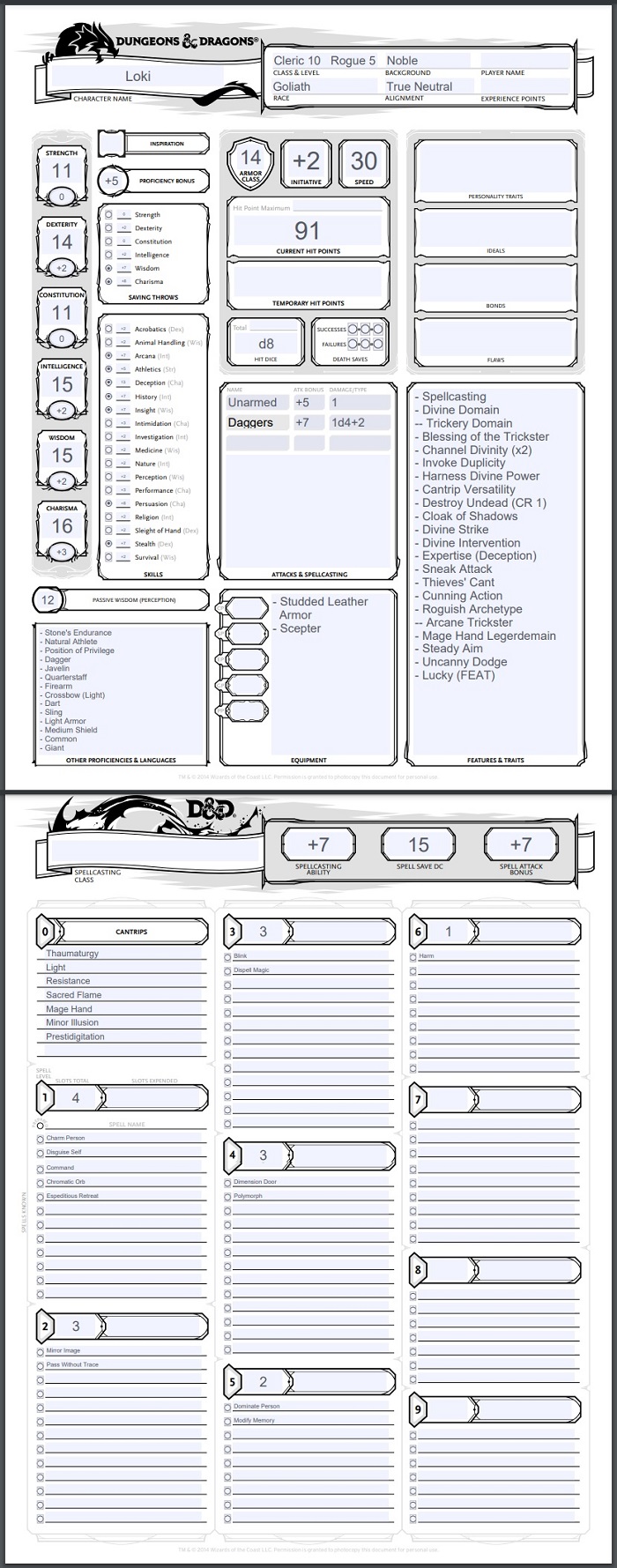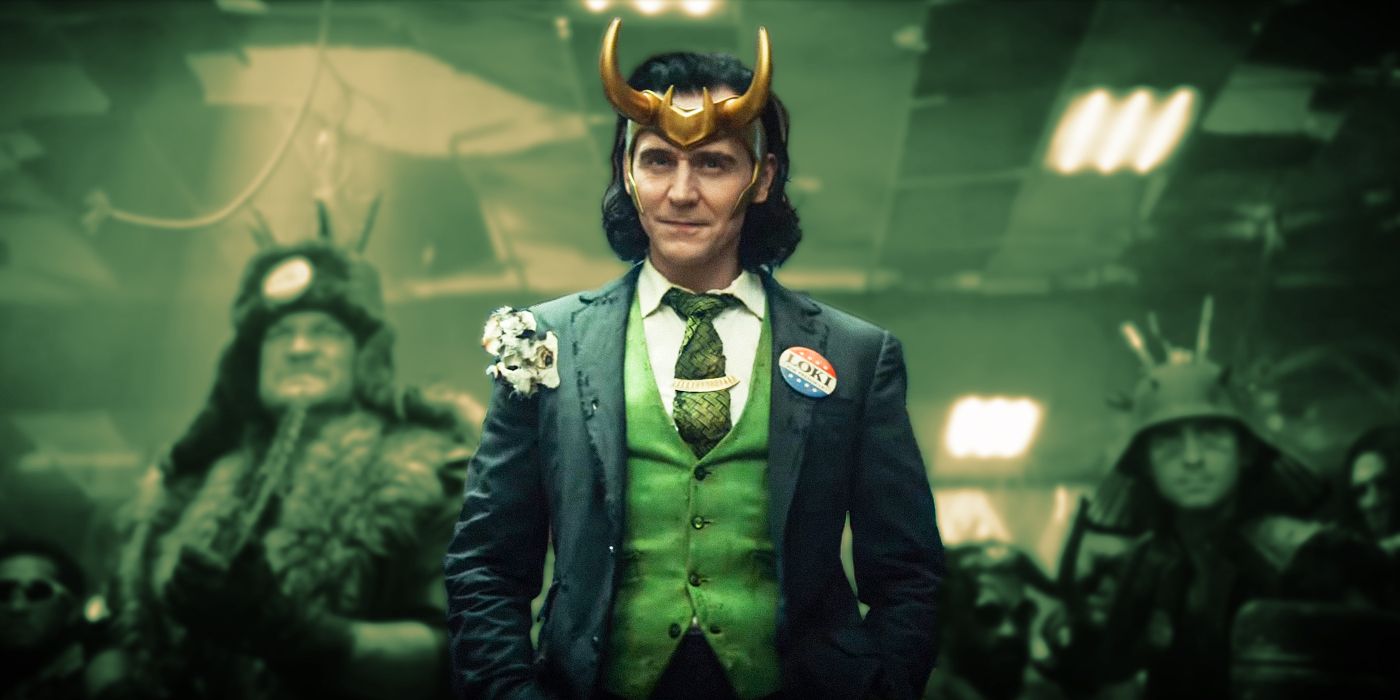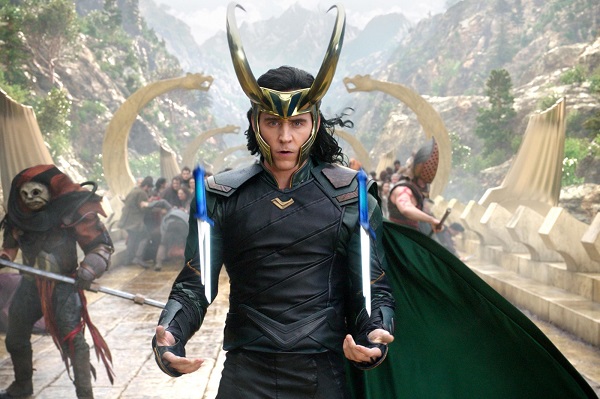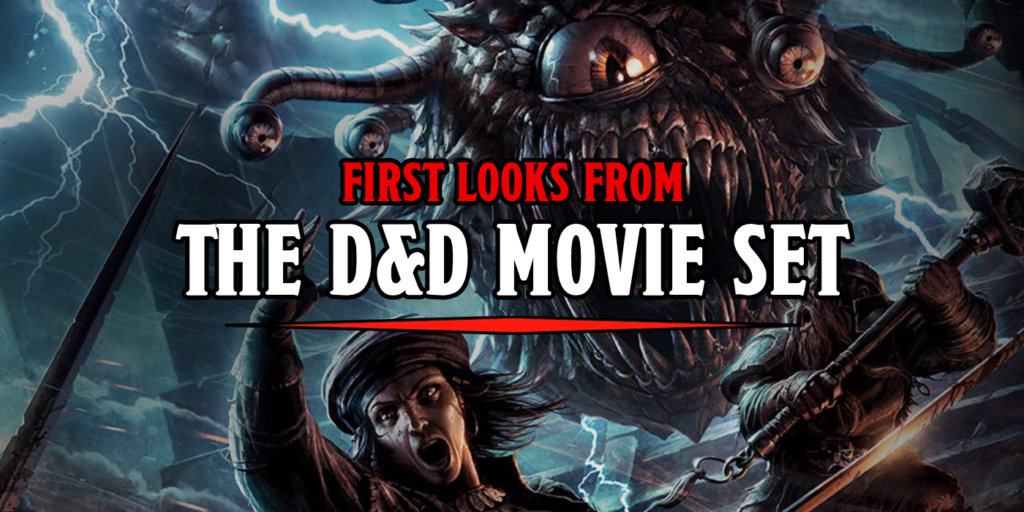Let’s Play D&D With Loki

This week we’re putting on our trickster boots and figuring out how to take the most power with the least resistance as we add Loki to our next D&D session.
The new Loki series came to Disney+ TODAY and whether you were excited enough to stay up until the wee hours of the morning to catch it or are still waiting until somebody gets home from work to watch it with them, it’s pretty evident that the entire internet is psyched to see Tom Hiddleston reprise his role as the eponymous trickster god. So excited, in fact, that we should figure out how to make him playable in our next D&D campaign.
Right off the bat, I’m pretty sure there are some questionable Loki choices I’m going to have to defend, but stick with me. His race was something that I went back and forth on for a few minutes. He spends a lot of time thinking he’s Asgardian – which would be Aasimar in estimation – but turns out to actually be the least blue ice giant. While frost giants exist in D&D, they’re monsters and not officially playable. Of the giant-adjacent races, I went with Goliath because they’re most passible as maybe-humanish while still being very distinct. It also gave me a way to boost his otherwise sad strength and constitution scores which were unfortunately Loki’s dump stats.
For class I went into this sheet thinking he would be Arcane Trickster Rogue down the board. Between Arcane Trickster’s description and Loki’s…. everything, it seemed perfect. But I also thought it sounded a little boring so I poked around to see what else was out there and realized that in my habit of never playing a cleric, I had completely overlooked the Trickery Domain subclass. And to make things even more apropos, Trickery Domain references Loki by name.
“Gods of trickery – such as Tymora, Beshaba, Olidammara, the Traveler, Garl Glittergold, and Loki – are mischief-makers and instigators who stand as a constant challenge to the accepted order among both gods and mortals. They’re patrons of thieves, scoundrels, gamblers, rebels, and liberators.”
Of course, it’s impossible to deny Loki’s roguish tendencies so we went for a multiclass and since he is something like a literal god, I wasn’t shy about giving him a whole bunch of levels to play with. I also made sure that he was extra lucky with the “Lucky” feat.
Clerics often lean into healing and helping, and that was hard to avoid on this sheet, but Trickery Domain also adds some very fun abilities like Duplicity’s ability to self duplicate and Cloak of Shadows’ disappearing act. And with a low constitution, and fewer than a hundred hit points, Loki is going to be avoiding as many direct strikes and combat scenarios as possible. He’s better at talking his way into and out of trouble and power, anyhow.
I tried to show that in his spells, as well. Most of them aim to influence people, change himself or his appearance, or simply get away from where he happens to be. Only one or two of those spells would be useful for direct combat, but Loki is rarely the sort to enjoy or seek out direct combat when somebody else can fight for him. But I did make sure he had his iconic daggers. Will he use them to tricksterly stab Thor? Probably. But, you know how siblings are.
How would you make Loki for a D&D campaign? Are you excited to tune in today? What show, movie, game, or comic should I make sheets from next? Let us know in the comments!
Happy Adventuring!






